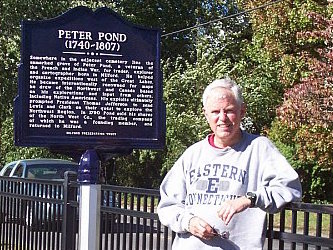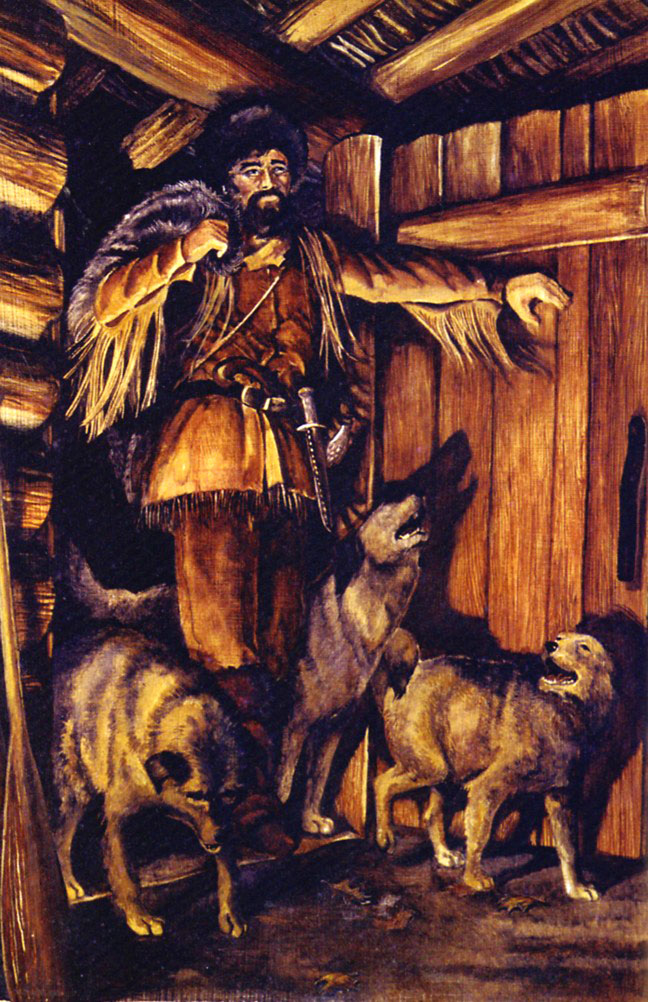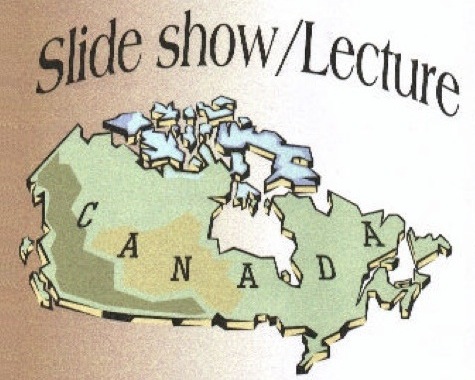Peter Pond newsletter :: May 2002 :: #12
Peter Pond Pilgrimage slide show
Hello:
This newsletter is essentially a short one to remind those within distance of my next Peter Pond Pilgrimage slide show, probably the nicest ever done for my program. Hope to see some of you there, and maybe you can correct me as I go along. For those not downloading, it's set for Wednesday May 8, 7 p.m. at Bridgeport Public Library, Black Rock Branch, 2705 Fairfield Avenue, Bridgeport, CT. Telephone 203-576-7427 for more information. Admission is free.
WEBSITE COMPLIMENTS
Here's a nice ego-boosting message that recently came in my Guestbook that I'd like to share. You don't see them much more effusive:
Name: Shawn England
Canada
This website is awesome because it helped me on a big history project. This web site rocks
April 15, 2002 21:26:58(GMT Time)
I recently added some more links to the site, one including a monster link on just about everything having to do with Lewis and Clark. It's complete with 905 entries, including mine which came on 4/29/02. Check it out.
Webmaster Jay Rasmussen complimented my site as follows:
"Playing what-ifs with history is fun, but I wonder about the strengths of your purported connections. I have read Mackenzie's journal. I wonder first, how much of an influence Pond was on Mackenzie and whether Mackenzie would not have gone exploring anyway. And, I think there were numerous reasons for the launching of the Lewis and Clark Expedition, with Mackenzie being one of those, but I would go so far as to say that without that impetus, that the L&C Expedition would not have occurred."
So in the end he agrees with me.
Please enjoy the following essay on the canoe, transcribed from a short daily program on National Public Radio. Peter Pond Society stems from a love of canoeing:
No. 1620: THE INDIAN CANOE
by John H. Lienhard
Today, birch-bark canoes. The University of Houston's College of Engineering presents this series about the machines that make our civilization run, and the people whose ingenuity created them.
The first Europeans in the Western hemisphere had only to look around them to find new ways of doing things. For example, North America has a vast network of lakes and rivers, and Native Americans had created the Indian canoe to make use of that resource.
Now and then we find a technology that does much more than just catch on. Some ideas are so right that people improve them until they fit their purpose perfectly and finally accept almost no further improvement. The Indian canoe is one such technology.
Minnesota, my childhood home, is called the Land of 10,000 Lakes, and all those lakes have canoes on them. Nowadays, most are made of aluminum or fiberglass, with polystyrene floats in the bow and stern. But their form is still identical with the Indian birch-bark canoe.
Native Americans kept little that we can call written records, and, since canoes were completely biodegradable, we have no archaeological remains either. Our earliest records of canoes are sketches left by the first European explorers. They show this ancient craft only fluctuating about one nearly perfect design.
Canoes are shallow-draft boats whose delicate shape has much in common with Viking ships. One advantage over a rowboat is that the paddler faces the direction of travel. Most canoes were small, light, and fast -- meant to carry a few people rapidly over our rivers and lakes. The Iroquois built big thirty-foot-long freight-carrying canoes that held 18 passengers or a ton of merchandise. Emptied, even those canoes could be portaged by just three people.
The old canoes had tough light wooden frames with a skin of bark, usually birch. Sometimes the bark was put on in one piece and pleated to take up slack as it was contoured. Sometimes it was sewn in sections and caulked with spruce gum. Material selection, sewing, binding, and carving were all sophisticated. Designs varied among tribes, according to local conditions. Even kayaks in the far North, covered with animal skin instead of bark, reflected the same underlying principles of shape and propulsion.
Longfellow, fascinated by this art, devoted a whole chapter of his Song of Hiawatha to Hiawatha's building of a canoe.
Build a swift Cheemaun for sailing,
That shall float upon the river,
Like a yellow leaf in Autumn,
Like a yellow water lily!
Now and then, we reach a sort of dead-end functional perfection. That's far from true of our new electronic media. But it is true of most commonplace technology that we've accepted. By 1840 we'd created a style of wooden house construction in North America that changes little in a high-tech world. Our automobiles have long since ceased to change radically from year to year.
And, like the automobile, the design of the North American Indian canoe is one we tinker with but do not alter radically. It is an American icon precisely because it has reached a point that appears to defy improvement.
I'm John Lienhard, at the University of Houston, where we're interested in the way inventive minds work.
(Theme music)
I wrote to the Prince Albert Herald managing editor about two weeks ago on any update plans for the Peter Pond cairn dedication. He said there was nothing new.
Several more interesting news items are pending, but I don't want to release them till have more information.

Au revoir,
Bill
website design by Daniel Ortoleva

